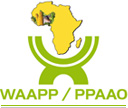
Senegal 01 March 2018 /
A new global research program on grain legumes and dryland cereals (GLDC) has been launched in Addis Ababa, Ethiopia. Results of the program are expected to improve the nutrition security of people living in West and Central Africa.
The over USD $ 400 million research intervention will prioritize demand-driven innovations to increase production and market opportunities for grain legumes and dryland cereals. These nutritious grain legumes are grown mostly in semi-arid and sub-humid agro-ecological zones of sub-Saharan Africa. In West Africa, this includes Burkina Faso, Mali, Niger, and Nigeria.
As Africa’s largest sub-regional research organization with a track record of working on dry cereals, CORAF was invited to join the GLDC Independent Advisory Committee. CORAF’s Gender and Social Development Advisor, Dr. Mariam Maiga was appointed to serve on the Board.
This five-year (2018-2023) program will mostly support research on six legumes and three kinds of cereals. This includes chickpea, cowpea, pigeon pea, groundnut, lentil, and soybean. The cereals include sorghum, pearl millet, and finger millet.
CORAF has been leading work on research on dry cereals in West and Central Africa. The National Center of Specialization on Dry Cereals based in Senegal has not only devised about 20 critical technologies since its creation but also introduced new beans and sorghum varieties.
As part of its research on climate-smart varieties, the center developed groundnut and cowpea variety options that are today helping farmers adapt to effects of climate change.
The Dry Cereals center and the Root and Tuber Center in Ghana have graduated to Regional Center of Excellence. The new status enables them to raise more funds, draw from a larger pool of internationally-recognized research talents, and the ability to further market their research results.
There are overall, nine national centers of specialization across West Africa leading research on priority commodities. They include the roots and tubers center in (Ghana), Rice (Mali), Dry cereals (Senegal), fruit and legumes (Burkina Faso), plantain (Côte d’Ivoire), aquaculture (Nigeria), maize (Benin), livestock (Niger), and mangrove Rice (Sierra Leone).
Maize, millet, sorghum, wheat, and rice are primary staple foods for most of the 430 million people living in West and Central Africa. Its sustainable production and transformation across the agriculture value are crucial to the food and nutrition security of the region.
The new program is expected to contribute in this regard.







